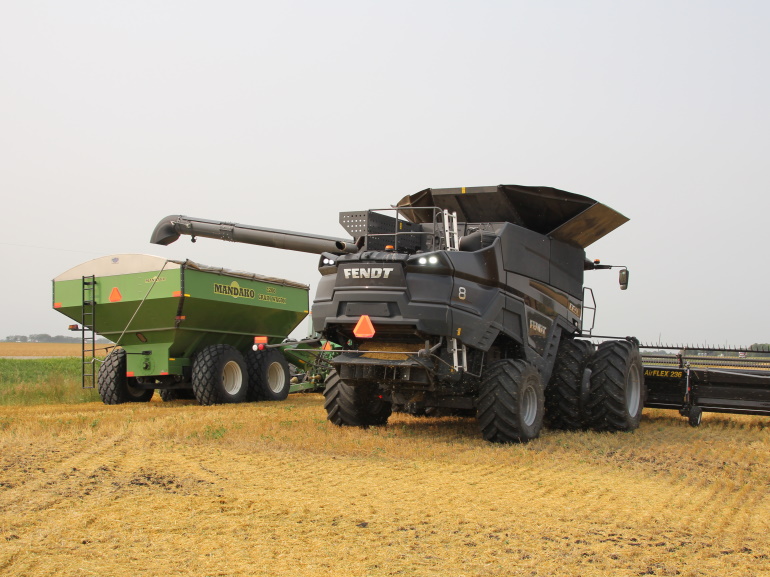Harvest is underway in the Moose Jaw area.
Mackenzie Hladun, crops extension specialist with Saskatchewan's Ministry of Agriculture, says the west central and southwest areas are a bit more advanced, however combines have also it the fields around Moose Jaw.
She says harvest timing is similar to last year.
"Right now, what we're seeing is that a lot of our crops that are coming off are those pulse crops such as peas or lentils. We're also seeing some of our feed crops coming off as well for greenfeed use such as barley or other sorts of feed crops as well."
Hladun hasn't heard of any early yield results at this point. She adds oilseeds and cereals are also starting to mature, as are the winter cereals.
For farmers who are not in the field quite yet, they're busy getting equipment tuned up and desiccating their crops.
The dry conditions continue to persist across the region.
"This past week really minimal rain was received with 5 mm being recorded in the Avonlea area and that being the maximum that was reported," continued Hladun. "Other areas of the southeast really only received trace amounts. The warm and dry conditions definitely persisted this past week and soil moisture started to become limited. Currently, around 12 per cent of cropland has adequate soil moisture, 48 per cent is short and 40 per cent is very short. Hay and pasture land is a very similar pattern, and is even more limited actually with 7 per cent being rated as adequate, 32 per cent as short, and 61 per cent as very short."
She says a lot of farmers are really hoping for rain this fall once the crops are off and also for lots of snowfall this coming winter to help replenish topsoil moisture next spring.
For many crops, it's too late for a good downpour to help.
"If your crop has already filled, of course yield would already be determined at that point, it is too late for rain to help your crop," explained Hladun. "However if you are still filling in your crops, you most definitely see a benefit if the rain does happen."
The hot and dry conditions have led to early maturity in many crops.
Pastures in the region are also feeling the effects of limited moisture with 21 per cent in fair condition, 58 per cent are poor and 16 per cent are very poor.
In addition to drought stress and heat, grasshoppers also continue to plague crops.
"There are definitely a lot of producers that are considering using their grain crops as feed sources and if they are considering doing that, I encourage them to reach out to the Saskatchewan Crop Insurance Corporation to discuss their options in dealing with those low-yielding crops," said Hladun.
Many farmers have stopped applying pest control products, however there are some that are still considering using them.
"If they are considering using pest control products, I highly encourage them to read the label, follow the label, and also follow pre-harvest intervals," concluded Hladun.
